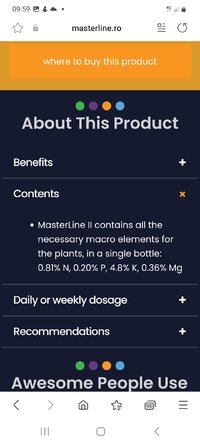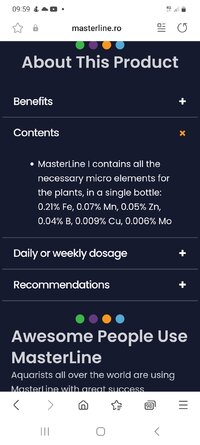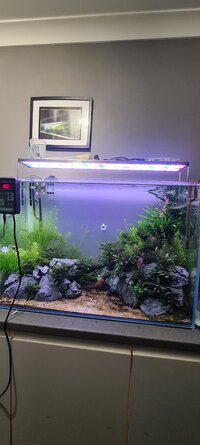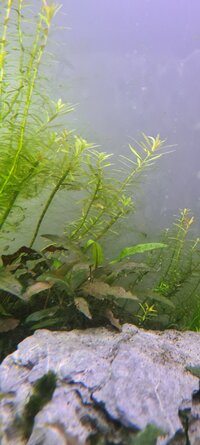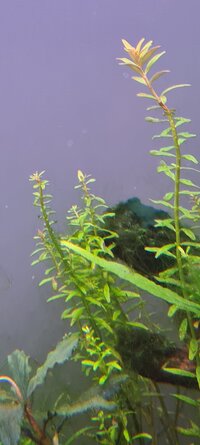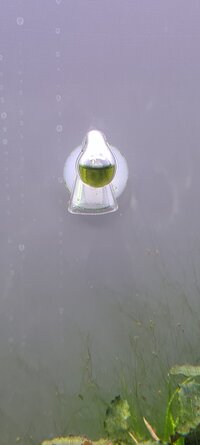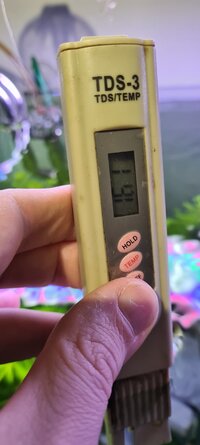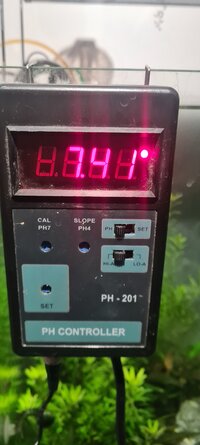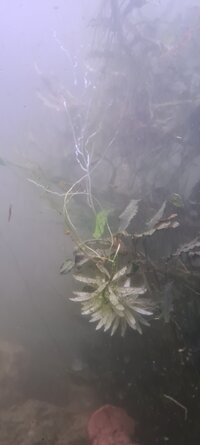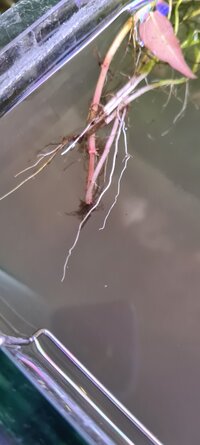Chrispowell
Member
- Joined
- 18 Apr 2014
- Messages
- 387
Morning all,
I'm using Pure RO water, adding masterline 1 and 2 and calcium chloride to the water at waterchange.
Tank is 240L, I'm adding 6ml of masterline 2 a day (macros) and 5ml a day masterline 1 (micros).
I add 5g of calcium to 100L of water at every water change.
Can't find the PPM of masterline but added screenshot of the contents
Thanks for any help
Chris
I'm using Pure RO water, adding masterline 1 and 2 and calcium chloride to the water at waterchange.
Tank is 240L, I'm adding 6ml of masterline 2 a day (macros) and 5ml a day masterline 1 (micros).
I add 5g of calcium to 100L of water at every water change.
Can't find the PPM of masterline but added screenshot of the contents
Thanks for any help
Chris


